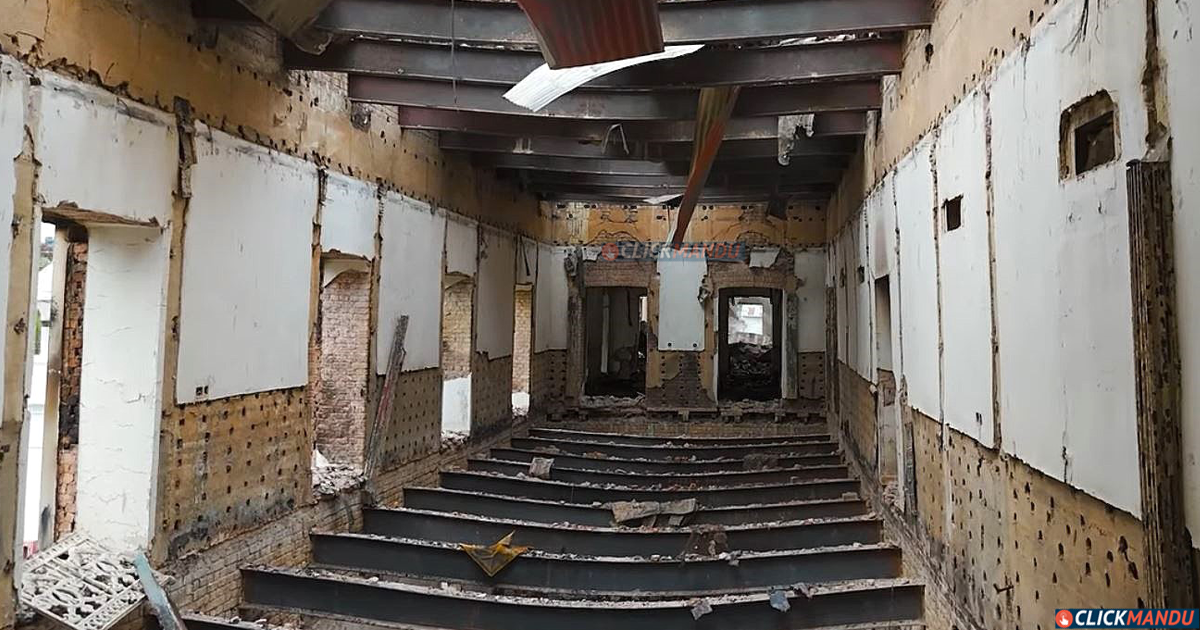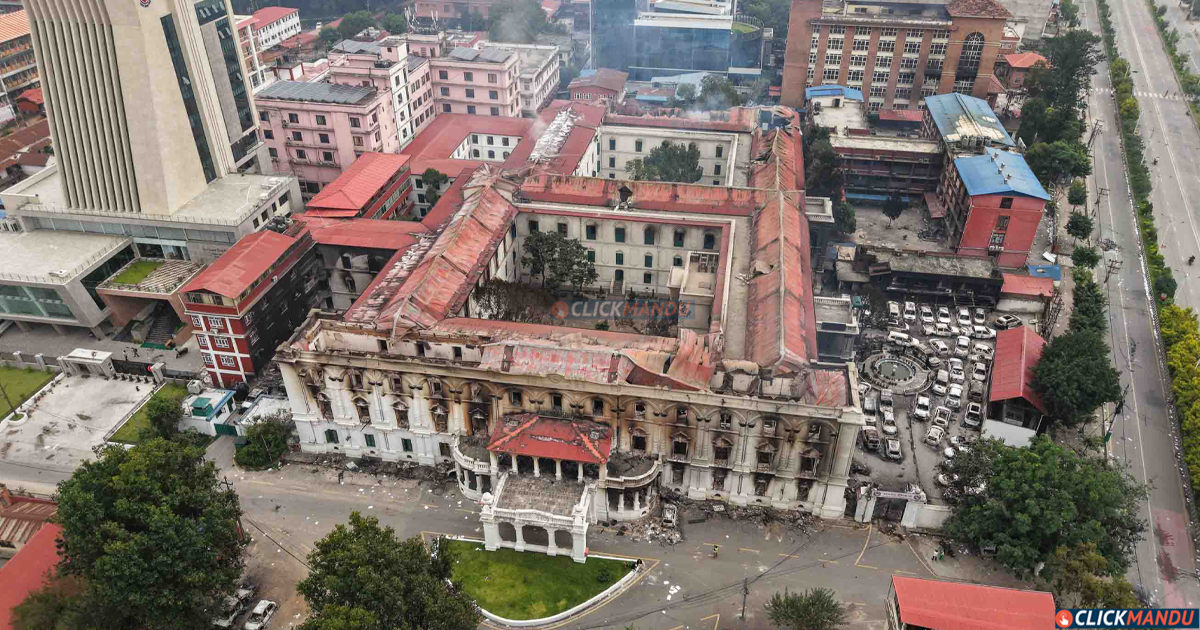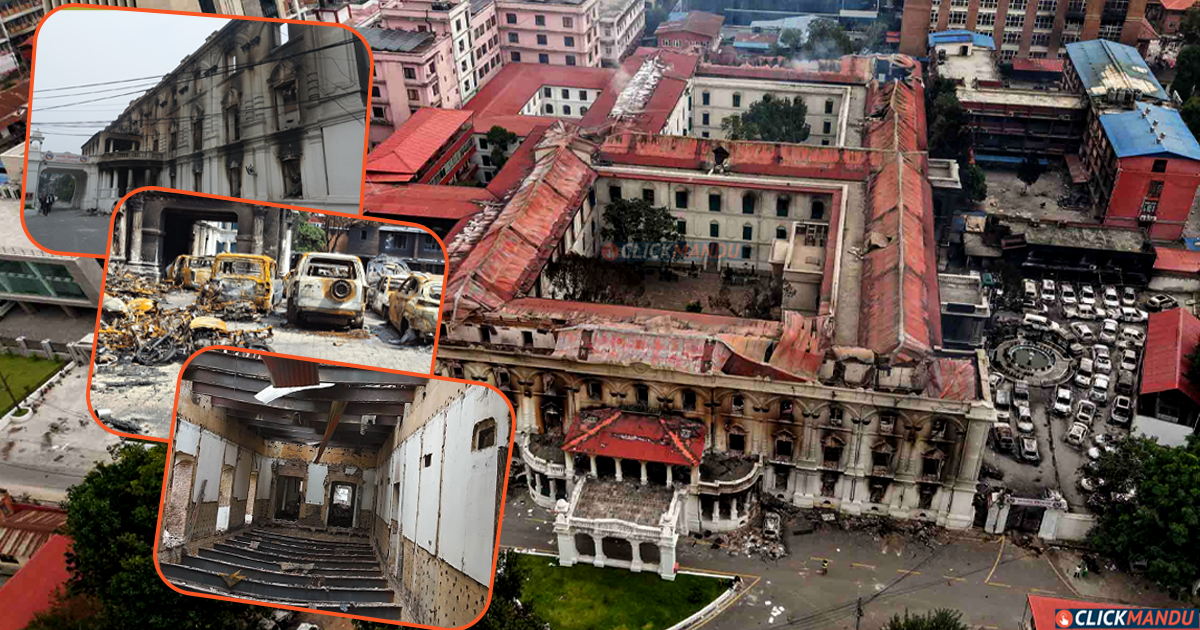Kathmandu: Just two years after moving into the reconstructed Babarmahal building, badly damaged in the earthquake, the Department of Roads has been forced to vacate the premises.
After the building was shaken by aftershocks, it was rebuilt and the Roads Department shifted there in September 2023. The department, heavily damaged in the devastating 2015 and 2017 earthquakes, had been rebuilt into a modern facility and was operating in upgraded form for the past two years.
The reconstruction was carried out by the Department of Urban Development and Building Construction with support from the National Reconstruction Authority at a cost of about Rs 860 million.
But after the Gen-Z protests and riots, vandalism and arson left the building completely destroyed. On 9 September, exactly two years after the move, the department was displaced once again.
The historic Babarmahal had been renovated with modern facilities, almost like a five-star hotel, but was directly targeted during the unrest. Fire destroyed about 95 percent of the physical structure. The thick lime-mortar walls cracked, wooden beams burned, and water from firefighting weakened the structure further.

The roof, windows, and doors made of wood were completely destroyed. No preliminary damage report has yet been submitted. Officials say most senior staff are occupied dealing with landslides and floods that have blocked highways nationwide, leaving little time to study the damage. A committee has been formed to assess losses, but entering the burnt building remains dangerous as walls and beams may collapse.
Protesters also torched over 200 vehicles parked on the premises, including both two-wheelers and four-wheelers. Dozens of pieces of furniture, AC units, digital boards, computers, TVs, printers, laptops, important equipment, and files were either burned or looted.
Four key units of the Roads Department were based in Babarmahal. Some smaller units survived, but most of the important divisions were destroyed. Officials say the building is now unusable, and key records have been lost beyond recovery, posing long-term challenges for infrastructure development.
Employees say they are heartbroken: after entering the new building in September, they were forced out again in September, just two years later. Officials add that repairing the damaged structure is pointless — it will have to be demolished and rebuilt, as even the iron beams have warped.
Now, the department is scattered across the city, operating only emergency services. Deputy Director General Prabhat Kumar Jha said coordination has become extremely difficult: “Before, with everyone in one place, meetings could be held within minutes. Now it takes 1.5 to 2 hours for officials to arrive.”
The arson also destroyed official vehicles, complicating travel for senior staff. Meetings often get postponed to the next day.
Currently, different offices are relocated to various sites: Bishalnagar, Chakupat, Harihar Bhawan, and parts of the surviving rear section of Babarmahal. The Mechanical Division, Mechanical Training Centre, and Madan Bhandari Highway Directorate have moved to the old Mechanical Training Centre in Patandhoka. The Development Assistance Implementation Division shifted to the old Quality Research and Development Centre in Patandhoka. Other projects, like the Nagdhunga Tunnel and Pushpalal Mid-Hill Highway, are working from the undamaged rear block of Babarmahal.
The Postal Highway Project is now at the Department of Railways in Bishalnagar, while the North-South and Trade Route Expansion Project has moved to the former Surya Binayak–Dhulikhel Road Project premises. The Kanti Lokpath Project Office has shifted to the Inland Water Transport Office building at Ekantakuna.
Still, with offices scattered, coordination is poor. Some urgent meetings are even held outdoors due to lack of space.

The Babarmahal building was originally built between 1903–1913 by Rana Prime Minister Chandra Shumsher for his son, Babar Shumsher Rana, after whom it was named. Built in a European neo-classical style, its thick walls, tall columns, large windows and doors, and spacious courtyards were defining features.
After the end of Rana rule in 1950, parts of Babarmahal were brought under government ownership, and the Roads Department has operated from there since then. For some time, the Office of the Auditor General and the Election Commission also functioned from its premises.
Today, one wing of the complex houses “Babarmahal Revisited,” a boutique hotel, restaurant, and art gallery operated by Gautam Shumsher Rana, a descendant of the original owners.



Comment Here